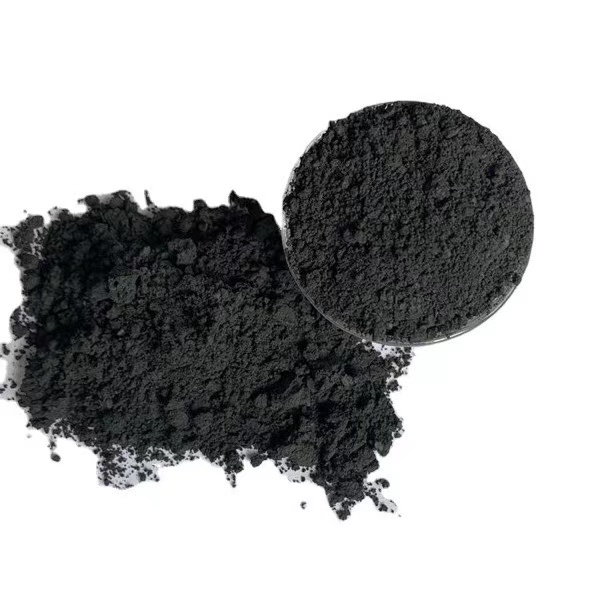How do you know synthetic graphite?
The latest forecast from consulting firm AlixPartners is that the chip shortage may cost the global auto industry $110 billion; it will reduce global auto synthetic graphite.
In a broad sense, all graphite materials obtained by organic carbonization and then graphitization at high temperature can be called artificial graphite, such as carbon fiber, pyrolytic carbon, foamed graphite, etc. In a narrow sense, artificial graphite usually refers to a blocky solid material obtained through the processes of batching, kneading, molding, carbonization and graphitization, using carbonaceous raw materials with low impurity content as aggregates, coal tar pitch, etc. as binders. Such as graphite electrodes, isostatic graphite, etc.
Manufacturing method
There are many ways to manufacture artificial graphite. The common method is to use powdered high-quality calcined petroleum coke as the main raw material, add asphalt as a binder, and then add a small amount of other auxiliary materials. After the various raw materials are mixed together, they are pressed and formed, and then treated in a non-oxidizing atmosphere at 2500-3000 ° C to make them graphitized.
main features
Crystal structure
Natural graphite: The crystal development is relatively complete, the degree of graphitization of flake graphite is more than 98%, and the degree of graphitization of natural microcrystalline graphite is usually below 93%.
Artificial graphite: The degree of crystal development depends on the raw material and the heat treatment temperature. Generally speaking, the higher the heat treatment temperature, the higher the degree of graphitization. The degree of graphitization of industrially produced artificial graphite is usually less than 90%.
organizational structure
Natural flake graphite: It is a single crystal with a relatively simple structure and only has crystallographic defects (such as point defects, dislocations, stacking faults, etc.), and exhibits anisotropic characteristics on the macroscopic level. The grains of natural microcrystalline graphite are small, the grains are disorderly arranged, and there are pores after the impurities are removed, showing isotropy on the macroscopic level.

Artificial graphite: It can be regarded as a multi-phase material, including graphite phase transformed from carbonaceous particles such as petroleum coke or pitch coke, graphite phase transformed from coal tar binder surrounding the particles, particle accumulation or coal tar pitch. The pores formed by the binder after heat treatment, etc.
physical form
Natural graphite: usually exists in the form of powder and can be used alone, but it is usually used in combination with other materials.
Artificial graphite: There are many forms, including powder, fiber and block, while artificial graphite in the narrow sense is usually block, which needs to be processed into a certain shape when used.
Physical and chemical properties
In terms of physical and chemical properties, natural graphite and artificial graphite have both commonalities and differences in performance. For example, both natural graphite and artificial graphite are good conductors of heat and electricity, but for graphite powders of the same purity and particle size, natural flake graphite has the best heat transfer performance and electrical conductivity, followed by natural microcrystalline graphite and artificial graphite. lowest. Graphite has good lubricity and certain plasticity. The crystal development of natural flake graphite is relatively complete, the friction coefficient is small, the lubricity is the best, and the plasticity is the highest, followed by dense crystalline graphite and cryptocrystalline graphite, followed by artificial graphite.
High-quality synthetic graphite supplier
Luoyang Moon & Star New Energy Technology Co., LTD, founded on October 17, 2008, is a high-tech enterprise committed to developing, producing, processing, selling, and technical services of lithium-ion battery anode materials. After more than 10 years of development, the company has gradually developed into a diversified product structure with natural graphite, artificial graphite, composite graphite, intermediate phase, and other negative materials (silicon-carbon materials, etc.). The products are widely used in high-end lithium-ion digital power and energy storage batteries.
If you are looking for synthetic graphite material, click on the needed products and send us an inquiry:sales@graphite-corp.com
New Delhi: India's Oil Ministry recently conveyed its intention to five national oil companies including Indian Oil Corp and Bharat Petroleum Resources LTD to assess the possibility of buying shares in Russian oil projects sold by European and American oil majors.
Bp announced it would give up its 19.75% stake in Rosneft, the Russian oil company. ExxonMobil said on March 1 that it would exit about $4 billion in assets and terminate all of its Russian operations, including the Sakhalin-1 project in Russia's far East.
India's oil ministry has asked the overseas investment arm of India's Oil and Gas Corporation to consider buying ExxonMobil's 30 percent stake in the Sakhalin 1 project in Russia's far East. ExxonMobil is the operator of the project and Indian companies already have a 20 percent stake in the project.
Because of the ever-changing international situation, the supply and prices of international bulk synthetic graphite are still very uncertain.
Inquiry us
NEXT NEWS